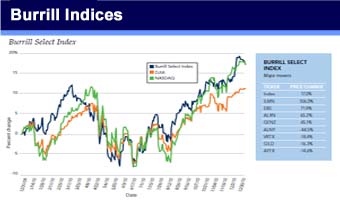“Data science and wearable computing hold the potential to transform our ability to capture and objectively measure patients’ actual experience of disease.”
Wearable devices that track bodily functions, rhythms, and movements will be put to the test by Intel and The Michael J. Fox Foundation in order to allow researchers and physicians to measure progression of Parkinson’s disease and to speed progress toward breakthroughs in drug development. Parkinson’s disease is a neurodegenerative brain disease second only to Alzheimer’s in worldwide prevalence. Their collaboration includes a multiphase research study using a new big data analytics platform that detects patterns in participant data collected from wearable technologies used to monitor symptoms.
“Nearly 200 years after Parkinson's disease was first described by Dr. James Parkinson in 1817, we are still subjectively measuring Parkinson's disease largely the same way doctors did then,” says Todd Sherer, CEO of The Michael J. Fox Foundation. “Data science and wearable computing hold the potential to transform our ability to capture and objectively measure patients’ actual experience of disease, with unprecedented implications for Parkinson's drug development, diagnosis and treatment.”
Monitoring progression of Parkinson’s is challenging due to the variability in symptoms among patients.
Researchers have been refining advanced genomics and proteomics techniques to create increasingly sophisticated cellular profiles of Parkinson’s disease pathology over the past two decades. Advances in data collection and analysis now provide the opportunity to expand the value of this wealth of molecular data by correlating it with objective clinical characterization of the disease for use in drug development.
“Emerging technologies can not only create a new paradigm for measurement of Parkinson’s, but as more data is made available to the medical community, it may also point to currently unidentified features of the disease that could lead to new areas of research,” says Diane Bryant, senior vice president and general manager of Intel’s Data Center Group.
The ability to collect and analyze data from thousands of individuals on measurable features of Parkinson's, such as slowness of movement, tremor and sleep quality, could enable researchers to assemble a better picture of the clinical progression of Parkinson's and track its relationship to molecular changes. Wearables can unobtrusively gather and transmit objective, experiential data in real time, 24 hours a day, seven days a week. With this approach, researchers could go from looking at a very small number of data points and burdensome pencil-and-paper patient diaries collected sporadically to analyzing hundreds of readings per second from thousands of patients and attaining a critical mass of data to detect patterns and make new discoveries.
The Michael J. Fox Foundataion and Intel initiated a study in early 2014 to evaluate the usability and accuracy of wearable devices for tracking agreed physiological features from participants and using a big data analytics platform to collect and analyze the data. The participants, 16 Parkinson’s patients and nine control volunteers, wore the devices during two clinic visits and at home continuously over four days.
Intel data scientists are now correlating the data collected to clinical observations and patient diaries to gauge the devices' accuracy, and are developing algorithms to measure symptoms and disease progression.
August 18, 2014
http://www.burrillreport.com/article-intel_and_fox_foundation_team_to_use_smartwatches_to_track_parkinsons_patients_.html


